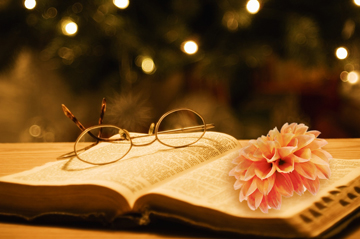

Lectio Divina as a Life Practice
I am honoured to have Christine Paintner as a guest poster on our contemplative ways blog. I almost met Christine in person at a workshop she was giving entitled, Awakening Creativity in Soul Care. That was rescheduled but I will still have that privilege at the end of January. When I emailed Christine to let her know what I was doing with the blog, she was immediately gracious in her acceptance and so we have a wonderful Contemplative Ways Posting by Christine. I love her book, “Awakening the Creative Spirit: Bringing the Arts to Spiritual Direction” and I would recommend it to those who are spiritual directors and have not read it so far. And of course, along with this posting, you will find her book, “Levtio Devina – the Sacred Art…” to be a great resource as you continue this practice. You can purchase these books and others through her website as well as partake of some great educational experiences. Christine Valters Paintner, PhD, REACE, is the online Abbess at Abbey of the Arts, an online monastery offering classes, books, and other resources to support contemplative practice and creative expression. She is the author of five books including: The Artist’s Rule: Nurturing Your Creative Soul with Monastic Wisdom, Lectio Divina—The Sacred Art: Transforming Words and Images into Heart-Centered Prayer, and Awakening the Creative Spirit: Bringing the Arts to Spiritual Direction. Her next book will be on the desert mothers and fathers (being published by SkyLight Paths in summer 2012). She earned her PhD in Christian spirituality from the Graduate Theological Union in Berkeley and her professional status as a Registered Expressive Arts Consultant and Educator through the International Expressive Arts Therapy Association. Christine lives as a monk in the world and an artist of everyday life in the heart of Seattle with her husband John and her dog Winter.
Lectio Divina as a Life Practice
By: Christine Paintner
 When I first was introduced to the practice of lectio divina many years ago I felt an opening inside of me, as if I was being met right where I was. I discovered in this ancient way of praying a mirror of my own inner movements and longing for contemplative depth. I felt supported in a way of savoring life and listening deeply for the voice of Spirit moving through sacred texts and the world.
When I first was introduced to the practice of lectio divina many years ago I felt an opening inside of me, as if I was being met right where I was. I discovered in this ancient way of praying a mirror of my own inner movements and longing for contemplative depth. I felt supported in a way of savoring life and listening deeply for the voice of Spirit moving through sacred texts and the world.
Lectio divina has four movements or stages to it which invite us into a place of savoring life and our experience and to discover God’s invitation to us in the midst of that savoring.
Shimmering
The first movement is to read the sacred text and listen for a word that shimmers or catches my attention. I do this as I sit to pray each morning with my scripture reading, but also as I move through the day I find that there are moments that shimmer forth: a friend offers me an unexpected insight, I gaze upon my sweetly sleeping dog, I go for a long walk and find the gathering of crows cawing stirs something in my heart, my husband reaches for my hand and in that moment I feel so deeply loved. We all have these shimmering moments calling to us each day if we pay attention. Through lectio I cultivate the capacity to notice these and honor them as important, as sacred.
Savoring
The second movement is reflection which involves taking what shimmers into my heart and allowing it to unfold in my imagination. I savor the images, feelings, and memories which arise. Our lives are so rushed, that savoring can become a counter-cultural practice. In my morning prayer I make space to just notice what experience is rising up in me, and in my daily life I become attentive to those experiences which stir strong feelings or trigger an unexpected memory. Perhaps I am driving in my car and a song comes on the radio which carries me back in time to a moment from my past and I am filled with emotion. Lectio cultivates my ability to make space to allow the fullness of my experience. Rather than holding back my tears and judging them, I let them flow and in the process discover a moment of healing and grace.
Summoning
The third movement is about responding to our prayer and listening for God’s invitation in this moment. In my morning practice I sit and wait as the word that shimmers and the images, feelings, and memories which have unfolded in my prayer begin to yield a sense of God’s longing for my life. In my daily life I notice when my heart is touched by an encounter and I sense that God is summoning me into something new through this very moment. I can’t know what that new thing is just yet, it is often more of an intuition. Sometimes it happens after I teach a class and I have expressed something in a new way and I surprise myself by my own words or a student asks a probing question which breaks open the subject in ways I hadn’t considered. These are moments of divine invitation and lectio helps me to respond.
Stilling
The fourth movement is about going more deeply into a space of rest and stillness. In my morning prayer I simply sit in silence for several minutes, basking in the experience of being rather than doing and feeling full of gratitude for this gift. As I move through my day I am touched by the moments of stillness I find in the midst of life’s busyness. I go for a walk and come upon a radiant dahlia blooming and I am stopped in my tracks, breathing in for just a moment the beauty of dahlias. I am sitting with someone who is sharing her deepest struggles and both of our eyes become wet with tears and we simply pause for a few moments to rest into the silence which holds us both.
Lectio and Life
After almost twenty years of practicing lectio divina, I see the world differently. Each moment and thing has the potential to become a vehicle for revelation. Lectio divina has changed my life. Instead of being something I practice for twenty minutes each morning it has become a way I experience and move through the world. Instead of feeling bound to a particular structure and sequence of steps, I discover that each movement of lectio has its own gift and rhythm and I open my heart to when it will be revealed in my day. The practice of a spiritual discipline is about more than the minutes we spend doing it, but how it overflows into the whole of life.
We might ask ourselves, is my vision changed because of this practice? If not, how might I let its gift be unleashed into each moment.






